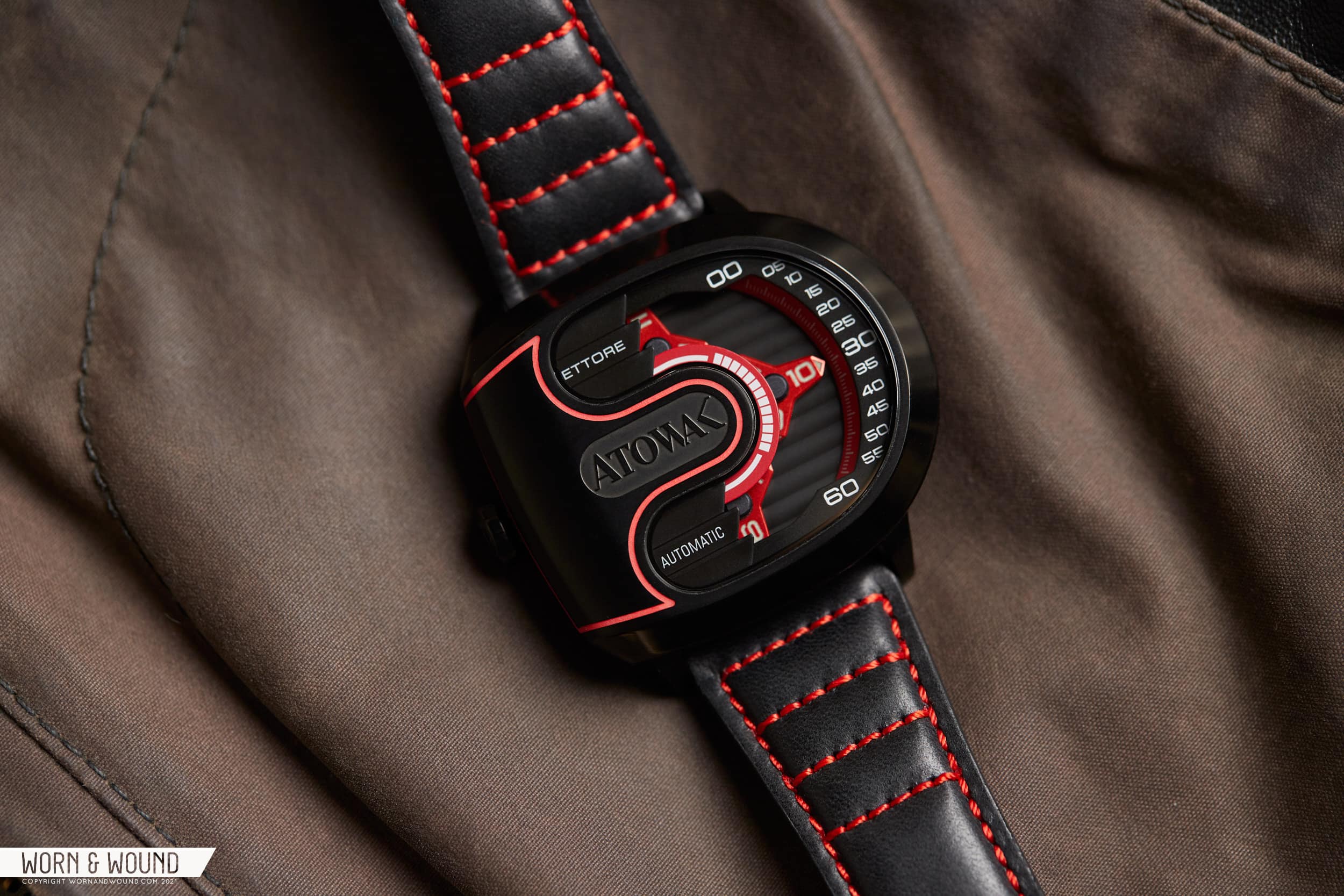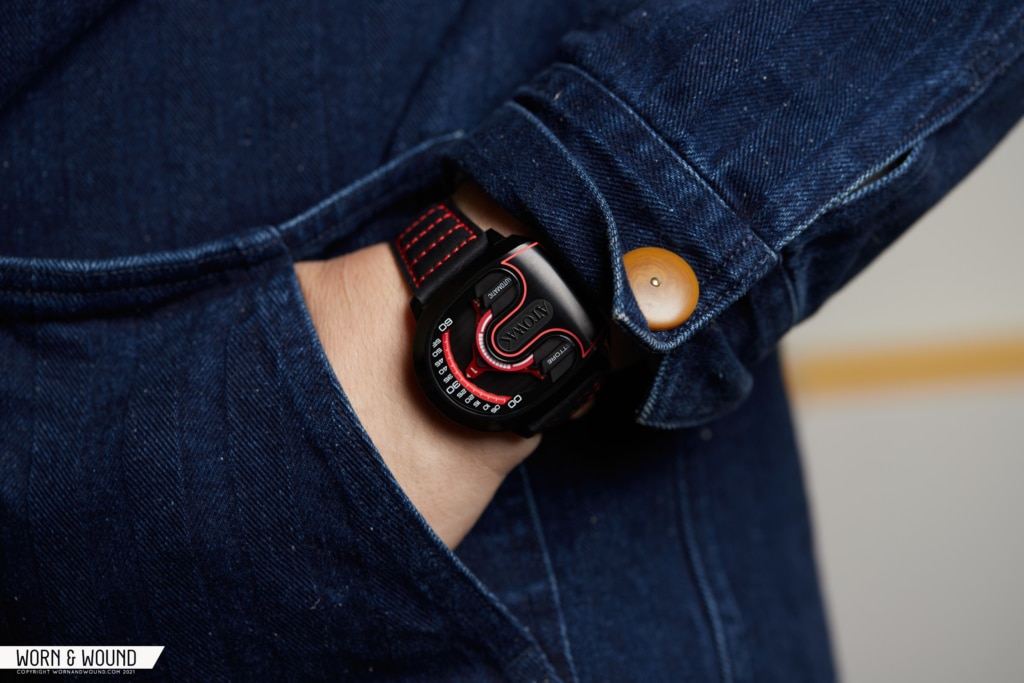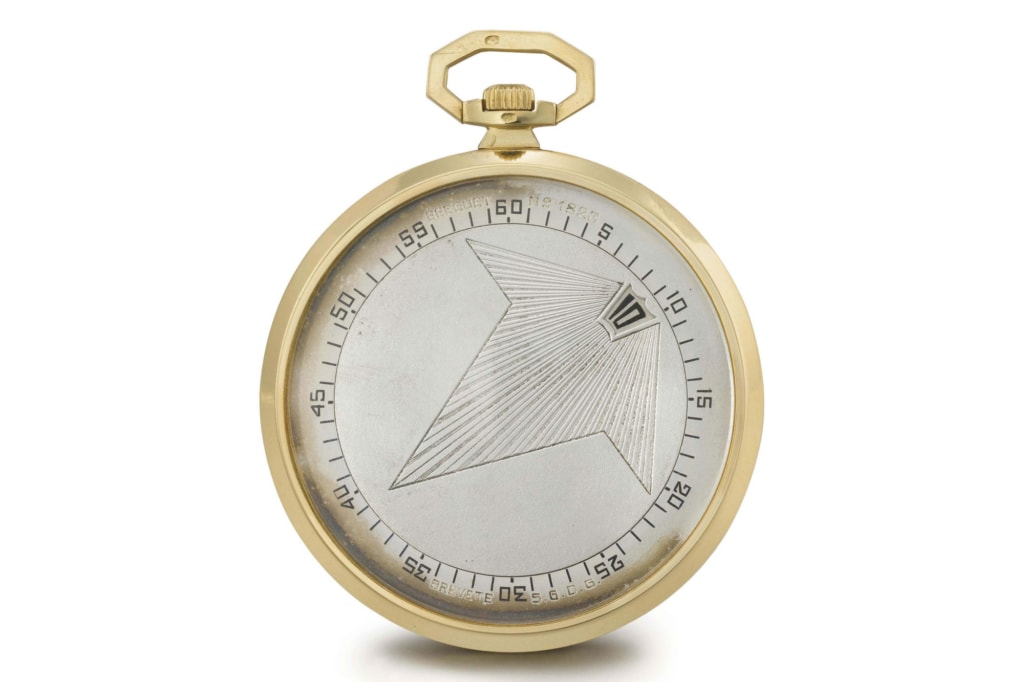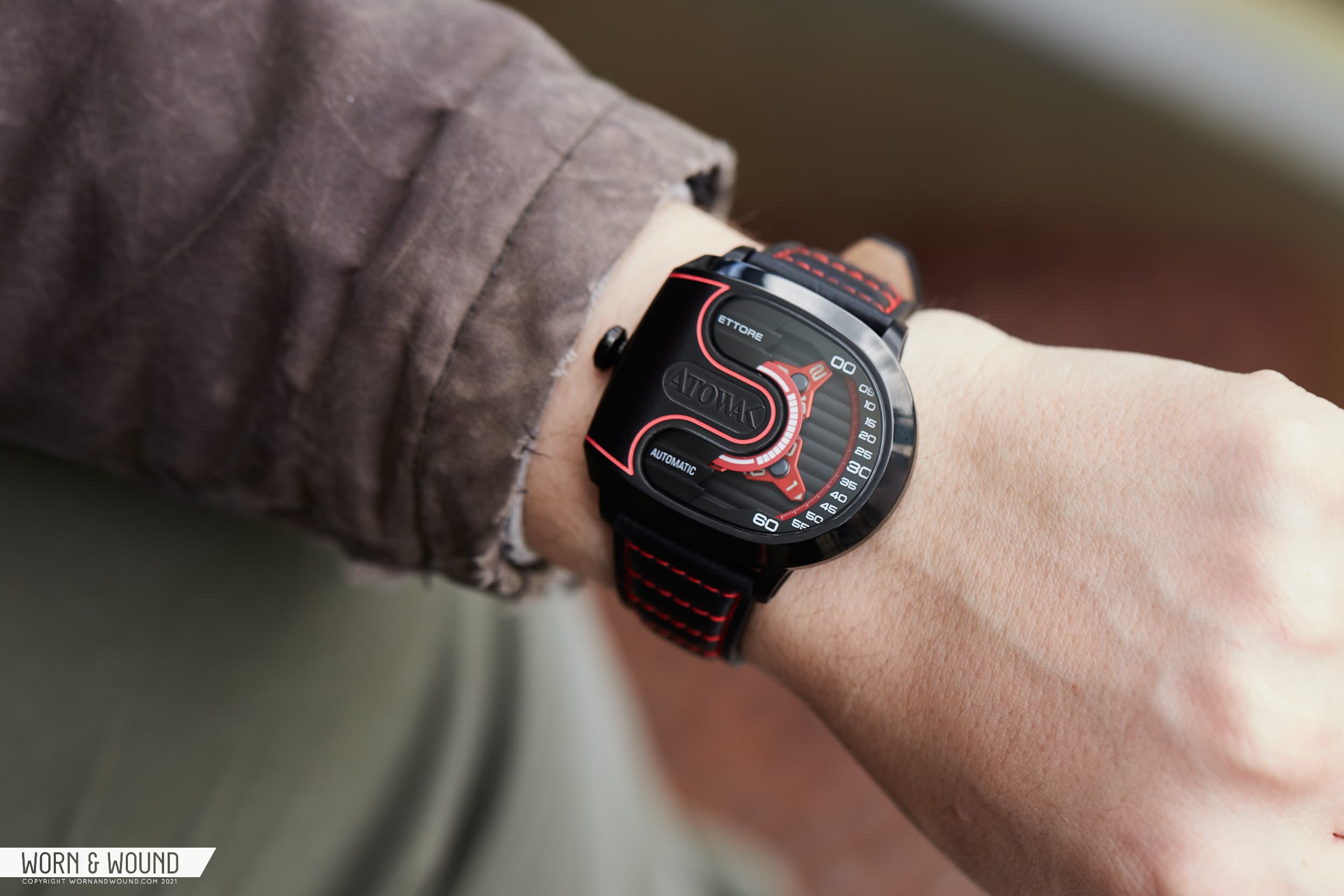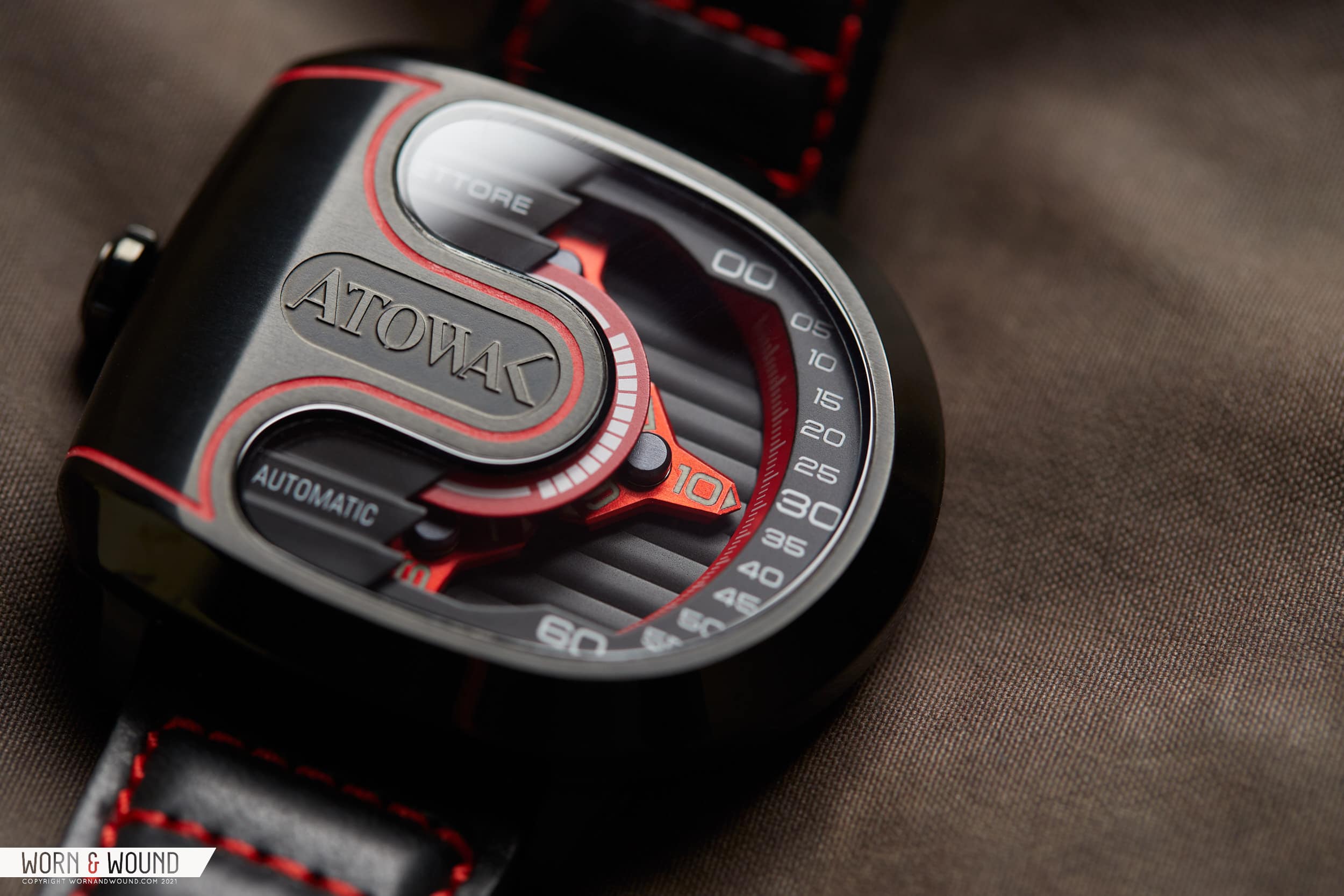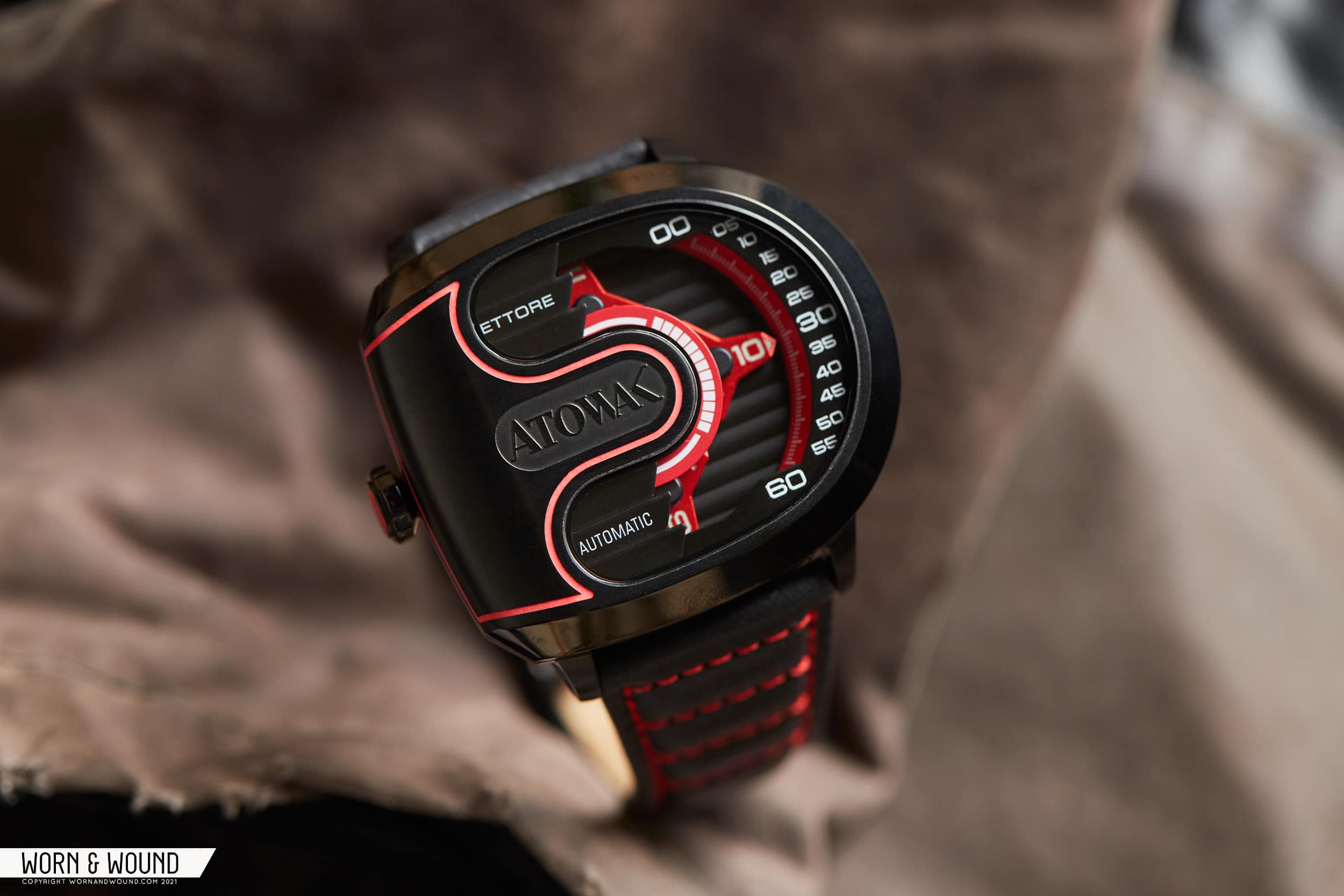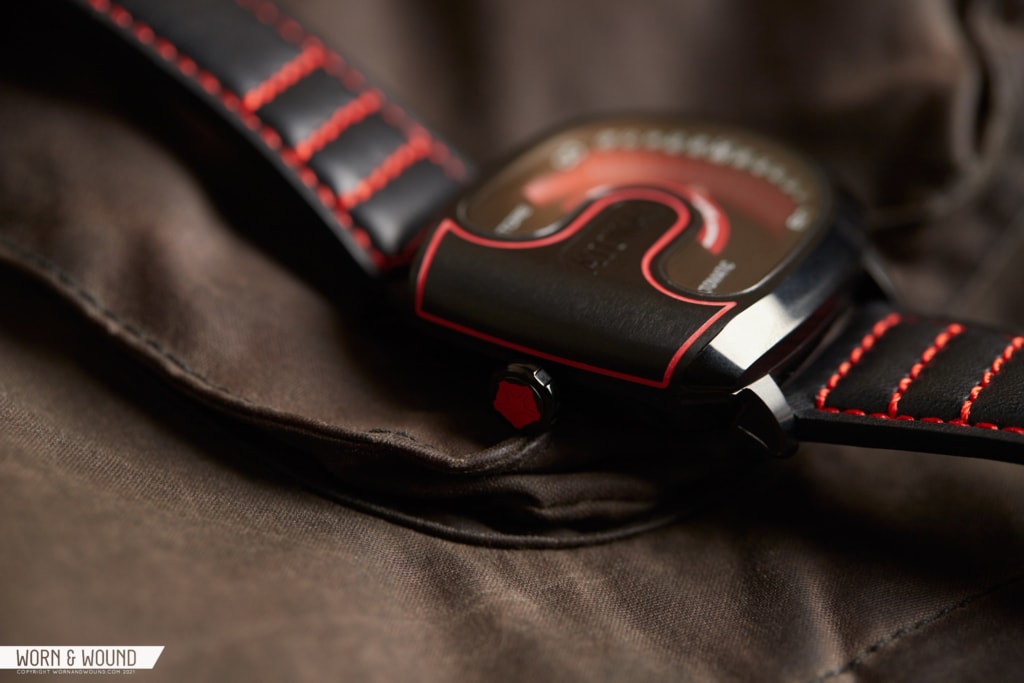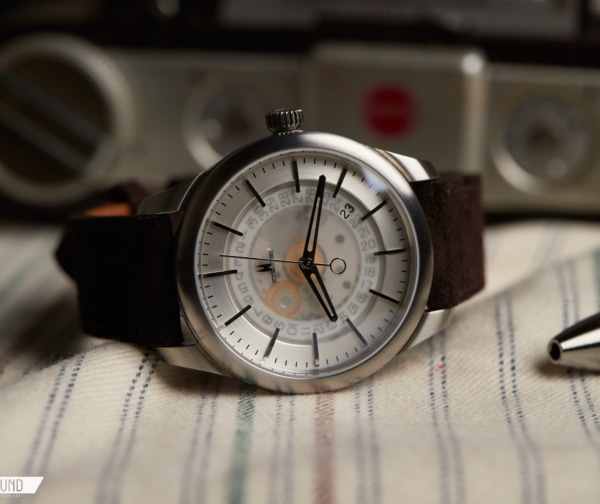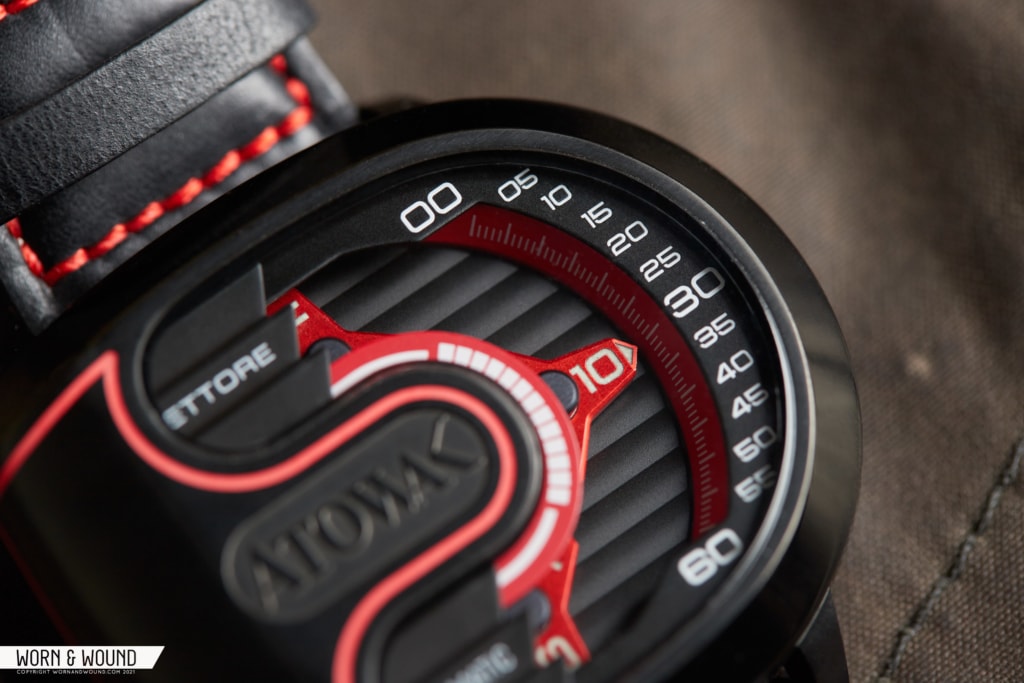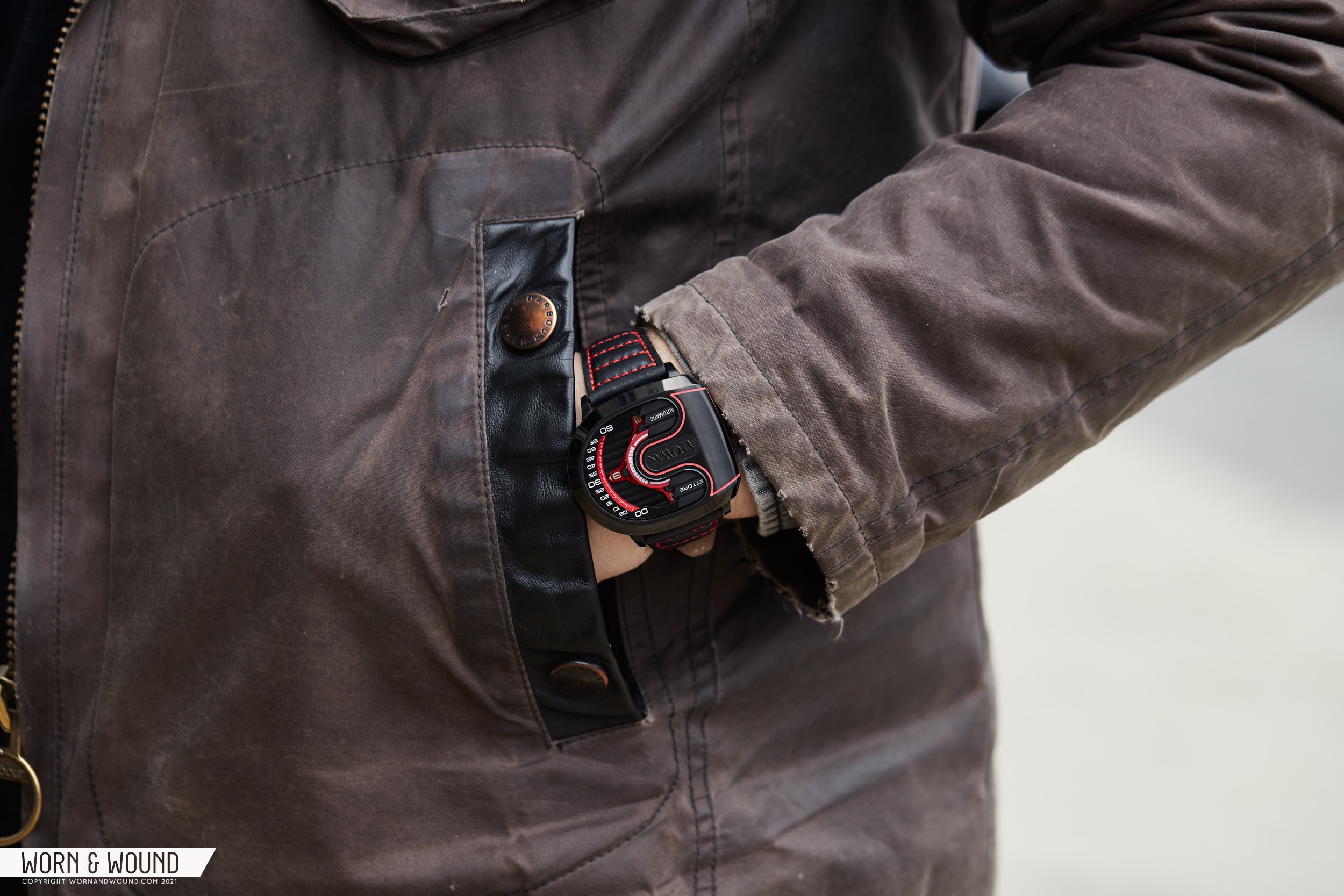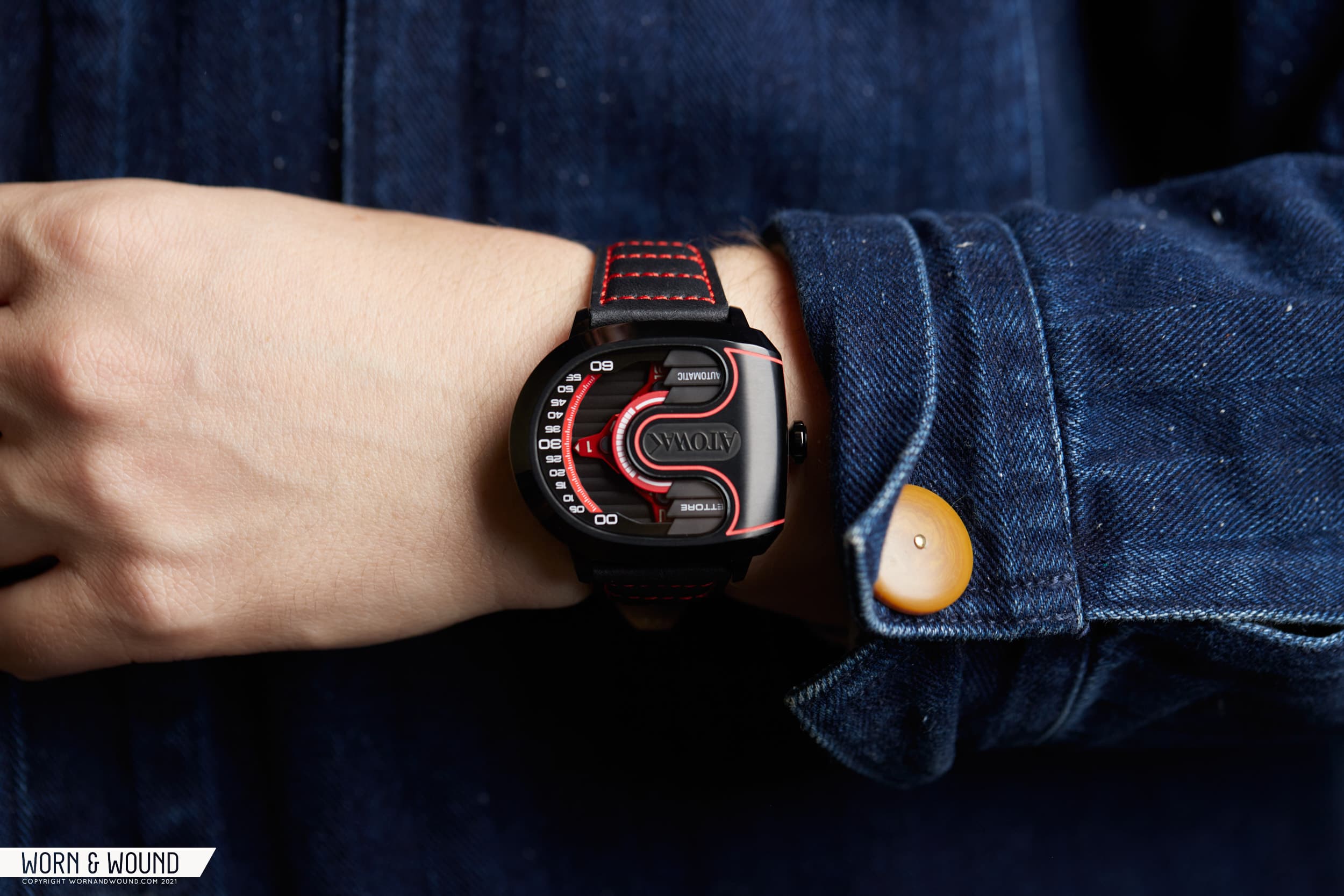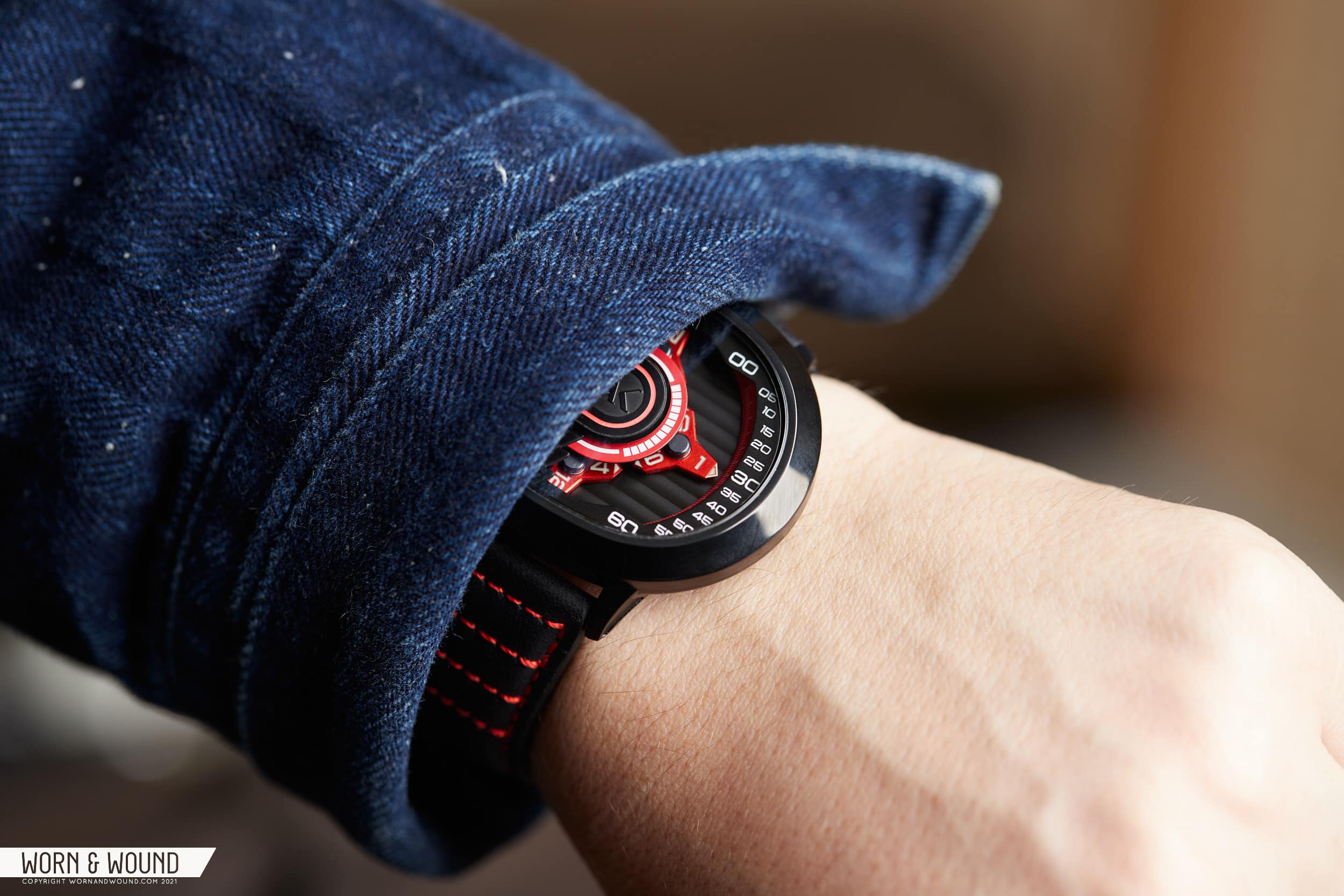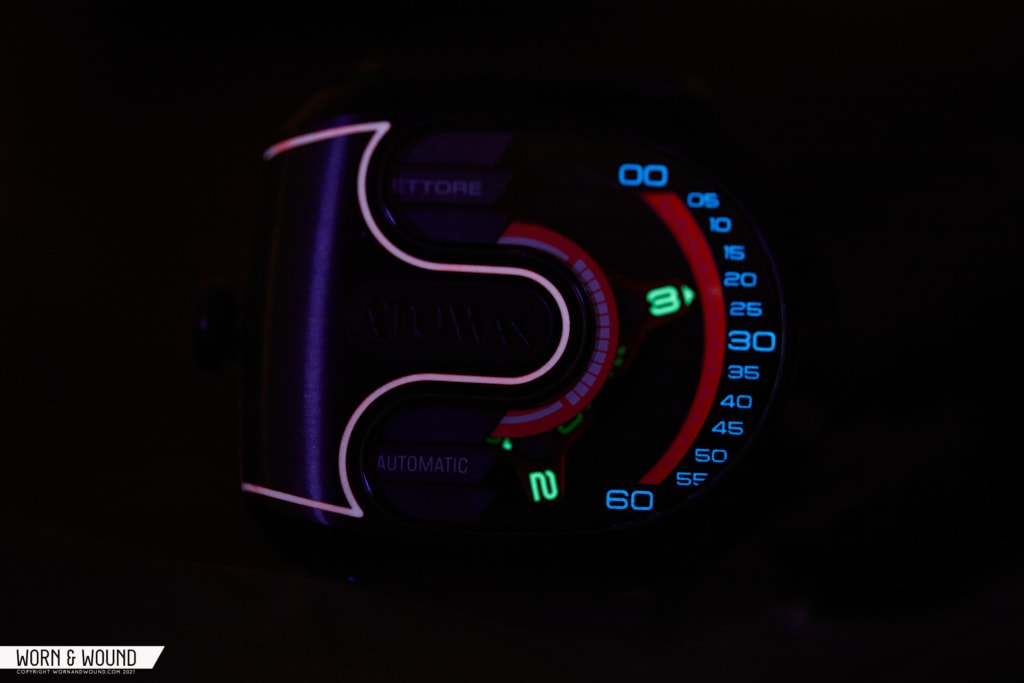I’ll start this review with a perhaps pretentious admission – if you send me an email with “the Bugatti of luxury” in the subject line, I probably won’t open it (or anything about redefining luxury, for that matter). Call me arrogant or a snob, but after doing this for 10 years, my “red flag filter” starts with the very subject line of an email. Too grandiose or pompous, and I’m likely to glaze over it. Well, on some fate-filled day a few months ago, my eyes caught on an email with that very phrase in the subject, and I opened it up. What I was met with was, well, surprising.
While I wouldn’t call the Atowak Ettore Drift the watch of my dreams, I was very excited to see it. An oddly shaped “supercar-inspired” timepiece, at first blush it was at least quite different. But what made it interesting, and frankly worth getting in for review, was that it featured a wandering hour complication – built on a Miyota 9015, with a pre-launch price of $550 (on a now ended Kickstarter campaign) and a retail of $1,199.
The wandering hour is a complication I’ve always personally admired. Like a jump hour in motion, it’s digital-analog, though completely mechanical, leading to a totally different experience of reading the time on a watch. As an alternative to the standard three-hander, you can’t go much further while still mechanical, easily earning a spot in one’s collection. But, they typically cost a not-so-small fortune.









 Featured Videos
Featured Videos




